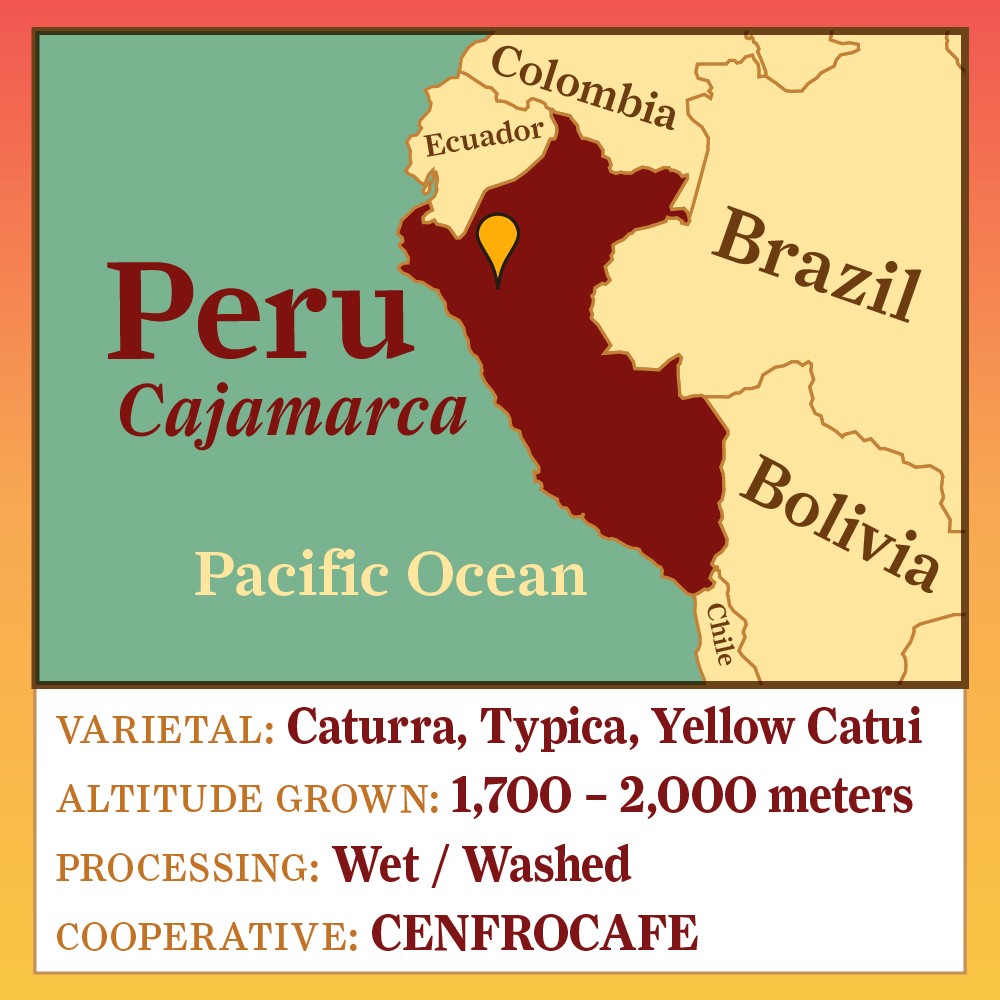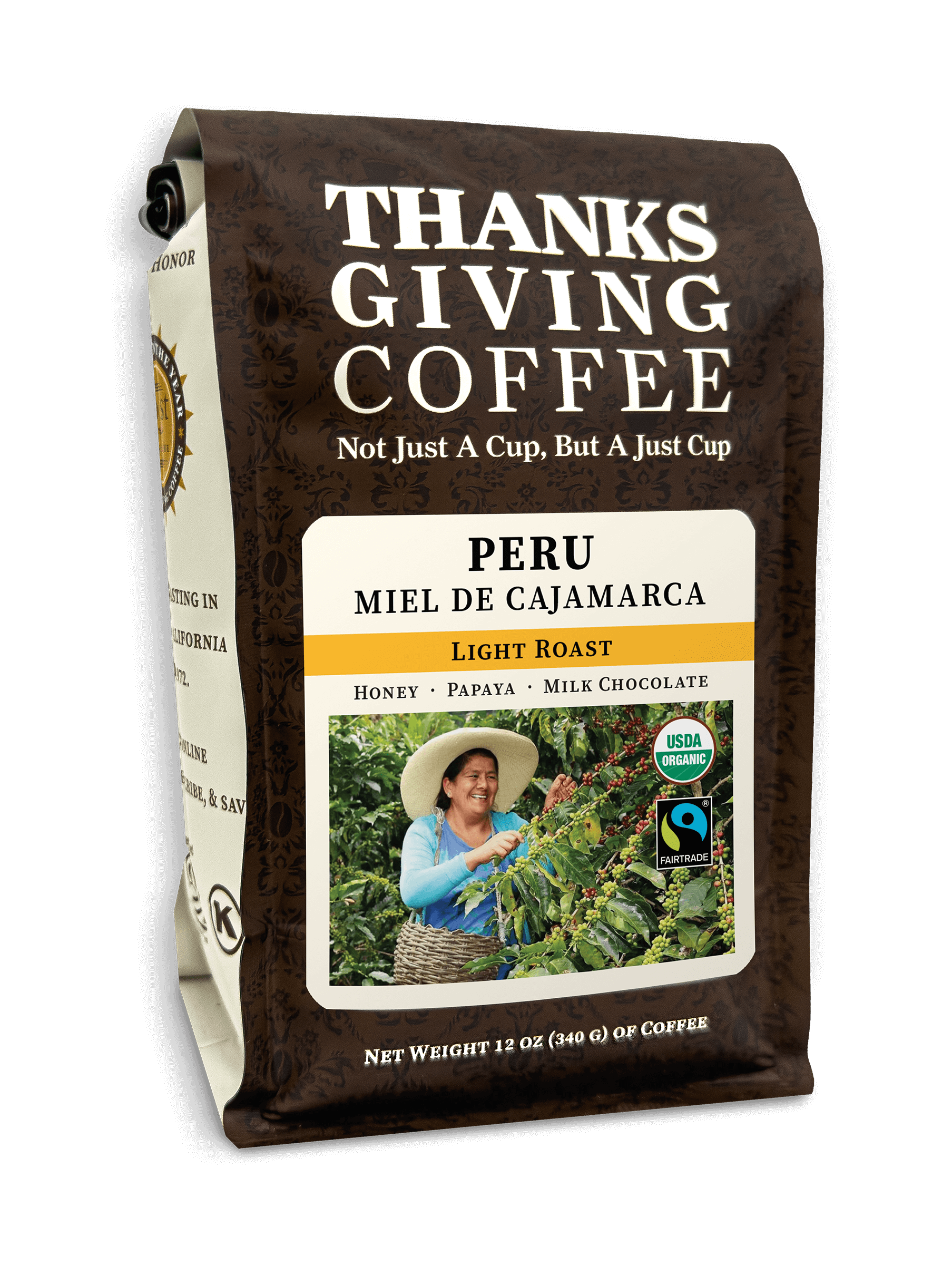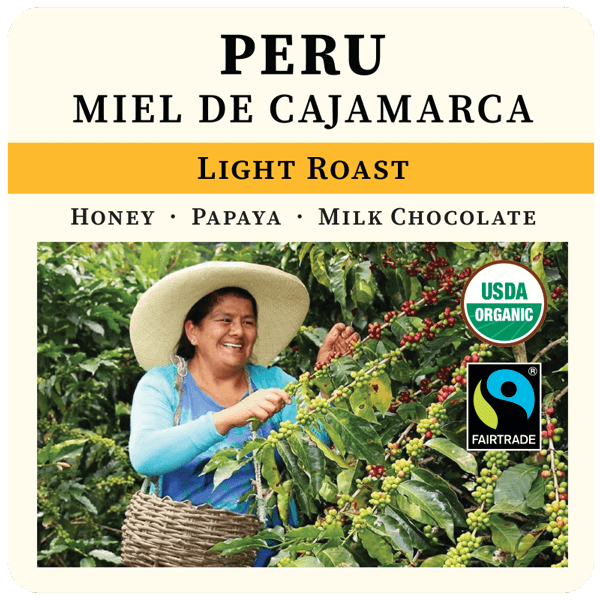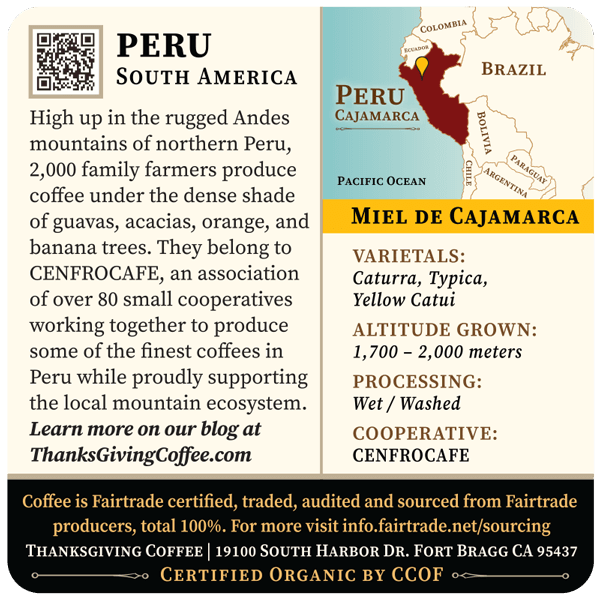Peru - Miel de Cajamarca, Light Roast
Peru - Miel de Cajamarca, Light Roast
With hints of honey, papaya, and milk chocolate complimented by a soft citric acidity. This coffee is grown in the high lush mountains of northern Peru on the rugged eastern flank of the Andes.
Two thousand family farmers produce the Miel de Cajamarca coffee under the dense shade of guavas, acacias, orange, and banana trees. These farmers are members of CENFROCAFE, an association of over 80 small cooperatives working together to produce one of the finest coffees in Peru, while stewarding the surrounding mountain ecosystem. Learn more here.
DESCRIPTION
-
COOPERATIVECENFROCAFE
-
PROCESSWet / Washed
-
REGIONCajamarca - Northern Peru
-
VARIETALCaturra, Typica, Yellow Catui
-
ALTITUDE1,700 – 2,000 masl
The members of CENFROCAFE carefully pick ripe cherries, depulp, ferment, wash and dry their coffee on their small farms ranging in size from one to three acres. The result is a finely crafted coffee with hints of honey, papaya, and milk chocolate complimented by a soft citric acidity. We have been working with CENFROCAFE since 2009.
Customer Review
Coffee to Water Ratio
Using the correct amount of coffee will ensure that your coffee is brewed to strength, without over-extracting or under-extracting the coffee to compensate for an inappropriate dose. We recommend 2 grams of coffee for every fluid ounce of water used to brew. Weighing coffee is the most accurate way to measure the appropriate dose. If a scale is not available, we recommend 2 heaping tablespoons of ground coffee for every 5 ounces of water used to brew.
Grind Size
Producing the correct particle size in ground coffee is one of the most important steps in coffee brewing. In general, a finer grind will produce a more intense brew and a coarser grind will produce a less intense brew. At the same time, a grind that is too fine will produce an over-extracted, astringent brew, and a grind that is too coarse will produce a weak, under-extracted brew lacking flavor. In pour-over methods, grind size also affects the rate of extraction, as water will pass more slowly through a finer grind, and more quickly through a coarser grind. We strongly recommend burr grinders over blade grinders.
Water Temperature and Quality
Water temperature dramatically affects the extraction of coffee’s flavor during brewing. We recommend brewing with water at 200-202° Fahrenheit for best results. Using fresh, clean, chlorine-free water is essential.
Coffee 101
Discover how to make the most in your cup with our brew blog - Coffee 101. Brewing variations, roast colors, coffee storage, steaming, and so much more. Not just for beginners, this info has gems for all coffee enthusiasts from novice to barista and beyond.
"I recently ordered Miel de Cajamarca to try it out. I do this often - try a new variety along with my standard tried and true ones. Miel de Cajamarca is outstanding. A lively and deep flavor, yet not a dark roast. Nice! Just ordered two more packages."






